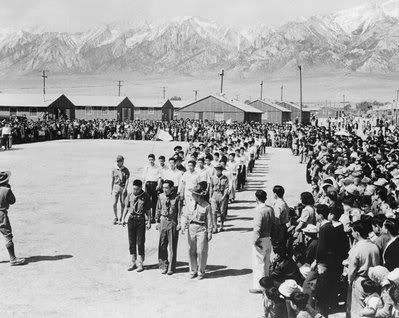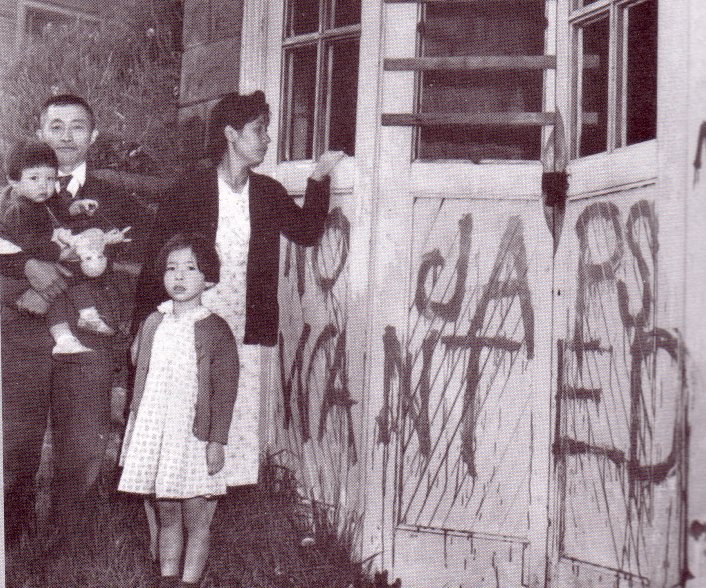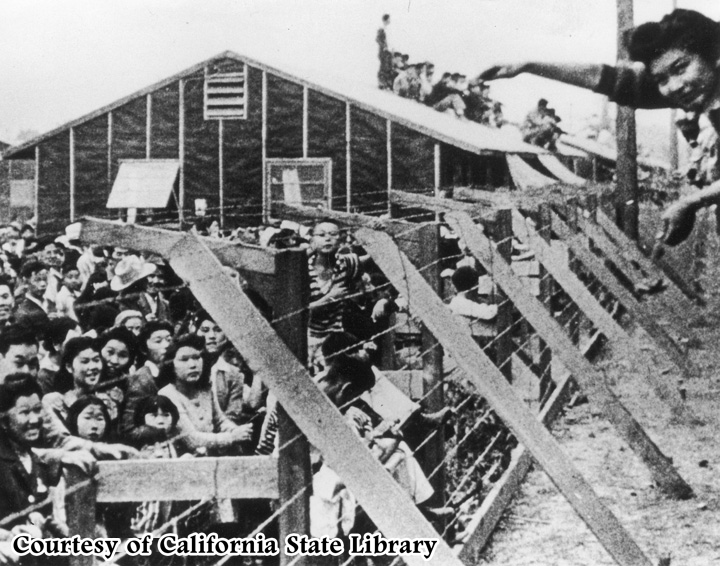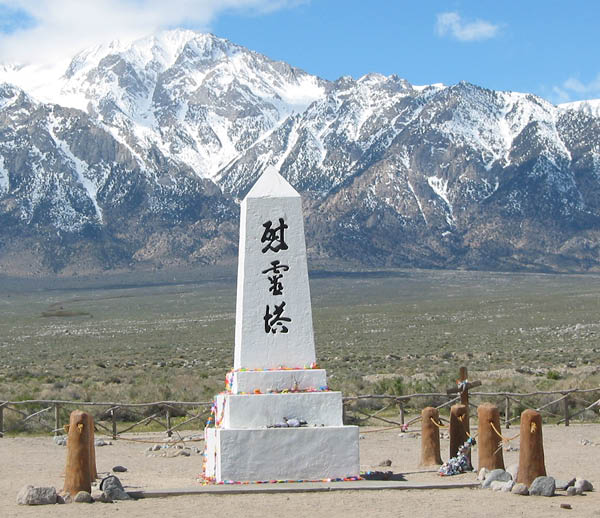Sentence of War Criminals
On November 12, 1948, on the basis of a simple majority of the eleven judges, Matsui and Hirota, with five other convicted Class-A war criminals, were sentenced to death by hanging. Eighteen others received lesser sentences. The death sentence imposed on Hirota, who was apparently sent to the gallows on the basis of a bare six votes, shocked the general public and prompted a petition on his behalf, which soon gathered over 300,000 signatures, but to no avail.
Generals Hisao Tani and Rensuke Isogai were sentenced to death by the Nanking War Crimes Tribunal.
Apology and condolences by the prime minister and emperor of JapanOn August 15, 1995, the fiftieth anniversary of the Surrender of Japan, the Japanese prime minister Tomiichi Murayama gave the first clear and informal apology for Japanese actions during the war. He apologized for Japan's wrongful aggression and the great suffering that it inflicted in Asia. He offered his heartfelt apology to all survivors and to the relatives and friends of the victims. That day, the prime minister and the Japanese Emperor Akihito pronounced statements of mourning at Tokyo's Nippon Budokan. The emperor offered his condolences and expressed the hope that such atrocities would never be repeated.
 Japanese American internment
Japanese American internment refers to the forcible relocation and internment in 1942 of approximately 110,000 Japanese nationals and Japanese Americans to housing facilities called "War Relocation Camps", in the wake of Imperial Japan's attack on Pearl Harbor. The internment of Japanese Americans was applied unequally throughout the United States. Japanese Americans residing on the West Coast of the United States were all interned, whereas in Hawaii, where more than 150,000 Japanese Americans composed nearly a third of that territory's population, only 1,200 to 1,800 Japanese Americans were interned. Of those interned, 62 percent were United States citizens.

 Climate at Manzanar
Climate at Manzanar The weather at Manzanar caused suffering for the prisoners, few of whom were accustomed to the extremes of the area's climate. The temporary buildings were not adequate to shield people from the weather. The Owens Valley lies at an elevation of about 4,000 feet (1,200 m). Summers on the desert floor of the Owens Valley are generally hot, with temperatures exceeding 100 °F (38 °C) not uncommon. Winters bring occasional snowfall and daytime temperatures that often drop into the 40 °F (4 °C) range. At night, temperatures are generally 3040 °F (16 to 22 °C) lower than the daytime highs, and high winds are common day or night.<49><51> The area's mean annual precipitation is barely five inches (12.7 cm). The ever-present dust was a continual problem due to the frequent high winds; so much so that prisoners usually woke up in the morning covered from head to toe with a fine layer of dust, and they constantly had to sweep dirt out of the barracks.

"In the summer, the heat was unbearable," said former Manzanar prisoner Ralph Lazo (. "In the winter, the sparsely rationed oil didn't adequately heat the tar paper-covered pine barracks with knotholes in the floor. The wind would blow so hard, it would toss rocks around.
Life behind the barbed wireAfter being uprooted from their homes and communities, the prisoners found themselves having to endure primitive, sub-standard conditions, and lack of privacy. They had to wait in one line after another for meals, at latrines, and at the laundry room. Each camp was intended to be self-sufficient, and Manzanar was no exception. Cooperatives operated various services, such as the camp newspaper, beauty and barber shops, shoe repair, and more. ] In addition, prisoners raised chickens, hogs, and vegetables, and cultivated the existing orchards for fruit. Prisoners made their own soy sauce and tofu.
Food at Manzanar was based on military requirements. Meals usually consisted of hot rice and vegetables, since meat was scarce due to rationing. In early 1944, a chicken ranch began operation, and in late April of the same year, the camp opened a hog farm. Both operations provided welcome meat supplements to the prisoners' diet.
Resistance
Although most prisoners quietly accepted their fate during World War II, there was some resistance in the camps. Poston, Heart Mountain, Topaz, and Tule Lake each had civil disturbances about wage differences, black marketing of sugar, intergenerational friction, rumors of informers reporting to the camp administration or the FBI, and other issues. However, the most serious incident occurred at Manzanar on December 56, 1942, and became known as the Manzanar Riot.
After several months of tension between prisoners who supported the Japanese American Citizens League (JACL) and a group of Kibei (Japanese Americans educated in Japan), rumors spread that sugar and meat shortages were the result of black marketing by camp administrators. To make matters worse, prisoner and JACL leader Fred Tayama was beaten by six masked men. Harry Ueno, the leader of the Kitchen Workers Union, was suspected of involvement and was arrested and removed from Manzanar. Soon after, 3,000 to 4,000 prisoners gathered and marched to the administration area, protesting Ueno's arrest. After Ueno's supporters negotiated with the camp administration, he was returned to the Manzanar jail. A crowd of several hundred returned to protest, and when the people surged forward, military police threw tear gas to disperse them. As people ran to avoid the tear gas, some in the crowd pushed a driverless truck toward the jail. At that moment, the military police fired into the crowd, killing a 17yearold boy instantly. A 21yearold man who was shot in the abdomen died days later. Nine other prisoners were wounded, and a military police corporal was wounded by a ricocheting bullet.

President Franklin Delano Roosevelt authorized the internment with Executive Order 9066 on February 19, 1942, which allowed local military commanders to designate "military areas" as "exclusion zones", from which "any or all persons may be excluded." This power was used to declare that all people of Japanese ancestry were excluded from the entire Pacific coast, including all of California and most of Oregon and Washington, except for those in internment camps. In 1944, the Supreme Court upheld the constitutionality of the exclusion orders, while noting that the provisions that singled out people of Japanese ancestry were a separate issue outside the scope of the proceedings.



The buildings may be gone, but the cemetery still stands in mute testimony to the fact that men and women lived and died in this inhospitable land.
Only 15 of the 150 people who died at Manzanar were buried here, while most of the others were cremated. Today, only 6 graves remain because the rest of the bodies have been moved closer to their families. People still come and leave tokes of remembrance though, like the paper chains decorating the monument and the doll lying on the bottom row.
The characters on this monument can be translated as "soul consoling tower". On the back, it reads "August 1943, erected by the Manzanar Japanese."
**My Grand Parents were at Manzanar. They lost their house and all their property. My Grandfather died at Manzanar. Tell us what more do you want?